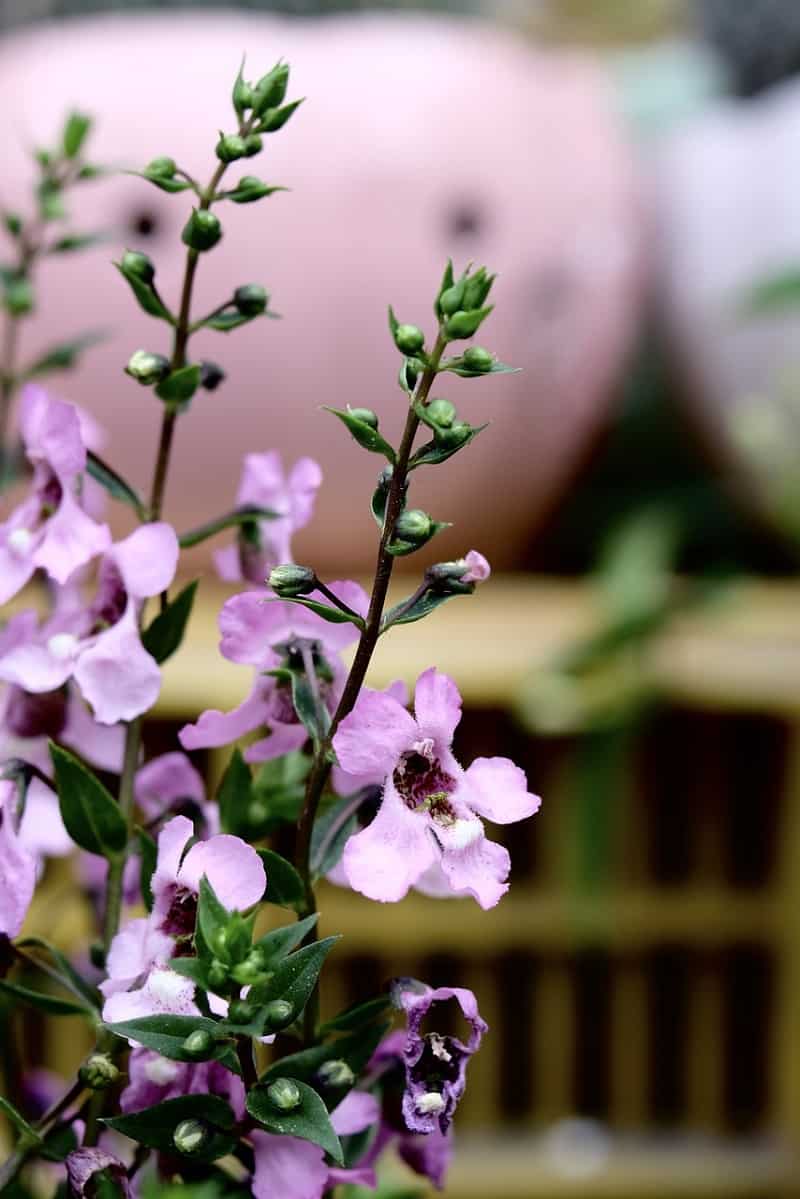Angelonia Flower (Angelonia Angustifolia) with the appearance of being a delicate plant and esasy for growth you will love it.
The plants are called summer dragons because they produce a profusion of flowers that resemble little dragons throughout the summer, and in hot climates, flowering continues until fall. Let’s learn more about growing Angelonia in the garden.
Botanical Name Angelonia angustifolia
Common Name Angelonia; summer snapdragon
Plant Type Tender perennial
Mature Size 18 inches
Sun Exposure Full sun
Soil Type Average, well-draining
Soil pH Acidic; 5.5 to 6.2
Bloom Time Summer
Flower Color White, pink, purple
Hardiness Zones USDA growing zones 9–11
Native Area Mexico and the West Indies
You may like Anemone Flower
How to care for the Angelonia Flower
An Angelonia Flower plant grows about 18 inches tall, and some people think the fragrant foliage smells like apples.
The flowers bloom in vertical spikes at the tips of the main stems.
The flowers of the species are blue-purple and the cultivars are available in white, blue, light pink and bicolor.
Angelonia flowers do not need a dead leaf to produce a continuous display of flowers.
Use Angelonia as an annual border bedding plant or plant it en masse to create an eye-catching display. They also grow well in pots and planters. They are good cutting flowers, and the foliage retains its fragrance indoors.
Leaves and bearing
It is a lively species of evergreen in frost-free temperate zones; in colder areas, it behaves as an annual. The bearing is low and highly branched, about 30 centimeters high by 30 centimeters wide.
Its herbaceous stems are populated with narrow and elongated leaves that give off a light apple scent.
Flowers
The flowers, similar to orchids (in some places they are known as summer orchids) but very small and simple, are grouped into upright spikes.
Its colors range from blue, violet and purple, to lilac and white, through pink.
Every year new varieties of monocolor and two-tone angelonias appear (blue and white, for example); Among them are the series ‘Angelmist’, ‘Serena’ and ‘Angelface’. Angelonia blooms abundantly throughout the summer, from June to September.
Culture
Angelonia Flower can be grown both in the garden, alone or in beds, in pots and even hanging baskets.
They are very tolerant of high temperatures and drought, and only need sun and heat to flourish for months.
Choose a place in full sun or light shade and place bedding in the spring two to three weeks after the last expected frost. Space them 12 inches apart in cold climates and 18-24 inches apart in warm regions.
When young plants are 6 inches tall, pinch the tips of the main stems to encourage branching and undergrowth.
Angelonia plant seeds are not available, but if you can find them, you can sow them directly outdoors in USDA zones 9 through 11. Start inside the colder zones.
Seeds generally take about 20 days to germinate, but can take up to two months.
Angelonia plants prefer moist, well-drained soil, but can withstand brief dry spells, especially if the soil is enriched with compost before planting. Keep the soil around young seedlings moist.
Allow the soil to dry between waterings once the plants are well established.
Feed the plants a light feed with 10-5-10 fertilizer once a month, but don’t overdo it.
If you give them too much fertilizer, they will produce more foliage and fewer flowers. Feed the plants in containers with a mixed liquid fertilizer according to the package instructions.
If Angelonia plants start spreading in midsummer, cut them to half their height. They will soon grow back and produce a new flow of flowers.
Propagating
Angelonia flower is easy to propagate with stem cuttings.
Take a 3-inch clipping from the tip of an angelonia stem.
Choose a cutting with no flowers. Strip all but the top pair of leaves from the cutting, as the stem cannot support the extra leaves without a root system.
Dip the cut end in rooting hormone, and insert it into moist potting soil. Keep moist, and when new leaves begin to form, your new plant is ready for the garden.
Conclusion
Angelonia flower is a genus of flower plants related to veronica and dragon’s mouth.
Little known even in Spain, Angelonia angustifolia is native to Mexico and stands out for its rapid growth and abundant summer flowering.
